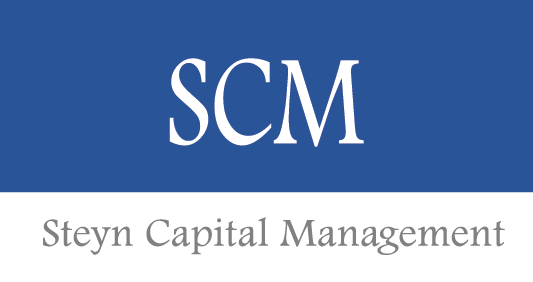Back in the 1950s, Markowitz was the first to mathematically prove how diversification can be best utilised in a portfolio: to minimise the risk – or volatility – of a portfolio at a given level of expected return. To this day, much of portfolio management theory rides on his work, and that of his former colleague, William Sharpe, of Sharpe Ratio fame.
The chart below, reworked from a chart presented by Ray Dalio in his book, Principles, illustrates the benefit of diversification with uncorrelated assets. The theory shows that as you increase the number of uncorrelated assets within a portfolio, the volatility of a portfolio as a whole can be significantly reduced. Each of the assets within this hypothetical portfolio, on a standalone basis, carries a standard deviation of 10%. The portfolio, however, carries a lower standard deviation, as the number of assets is increased, and the correlation of assets is decreased.
The difference in risk reduction between adding correlated and uncorrelated assets is substantial – in this scenario, combining 20 uncorrelated assets (20% correlation) reduces the standard deviation of portfolio returns by a whopping 51% (from 10% to a 4.9% standard deviation), while doing the same with 20 highly correlated assets (95% correlation) will result in only a 2% risk reduction (from 10% to 9.8% portfolio standard deviation).
When turning this theory into practice, there are two important considerations. Firstly, how uncorrelated are the assets forming part of the portfolio, and secondly, how much return are you effectively giving up or “paying” for that reduction in risk?
How uncorrelated are your assets?
Over the last decade, we’ve observed the discomforting trend of rising concentration, and therefore correlation, in equity markets. What has driven this concentration is up for debate – theories include the rise of passive investing, poor recent returns from other asset classes (bonds) and regions (China), the pandemic related acceleration of the shift to online and the AI revolution.
What is not up for debate is that this concentration has permeated equity markets on multiple levels. Regionally, the US has grown its share of global market cap to the highest levels on record – around 65% vs the previous peak of just under 60% (during the dot-com bubble)1. That’s for a country contributing around 26% of global GDP (PPP calculation). Within the US market itself, the top 10 stocks now account for over 30% of US market capitalisation, a number you must go back to the 1960s to find2. Tech, telecoms and healthcare have raced ahead, now accounting for ~45% of global market cap – a level not seen since, you guessed it, the dot-com bubble1.
The past decade excluded, buying the largest companies in the world has typically been a poor long-term investment. Research shows that buying the top three stocks in the S&P 500 over the period from 1950 to 2023 would have returned a compounded annual underperformance of 4.3% relative to the index2. Buying a market cap index at times of high stock market concentration – to some extent doing the same thing – is a bad idea for investment returns.
Investors need to carefully consider what exactly they are buying with a market cap weighted index. By buying the MSCI All Country World Index, for example, investors might believe they are getting cheap exposure to a globally diversified equity portfolio. Looking into the numbers reveals a different picture. At the time of writing, a R100 investment into the ACWI means you are investing R65 in US equities, of which just under R20 is going into the Mag Seven. The other R35 is split between R25 for ex-US developed markets, and a measly R10 into emerging markets. Not surprisingly, the correlation of this index’s returns to the S&P 500 over the last three years should leave one feeling rather uncomfortable, at 98%!
ACWI serves as a benchmark for a vast proportion of global invested capital. Market cap weightings are commonplace in passive investing strategies and even some active managers, for fear of losing out (or their jobs), may be heavily exposed to the last decade’s winners (ie US large caps). We fear that the average investor, unknowingly, is participating in this unintended global game of momentum investing, and becomes overallocated and over-correlated to the top end of the US market.
US markets have shot the lights out over the last 15 years, but one should be careful in extrapolating this going forward. These periods move in cycles, as my colleague, James Corkin, elaborated on in an article published in November 2023, titled “Emerging Markets: a coming bull market?”. Emerging markets contribute around 40% of global GDP (and 80% of the world’s population).
Select hedge funds can be a powerful diversification tool
We’d like to offer up an often-overlooked alternative within the equity sphere, that can provide truly uncorrelated returns: hedge funds.
Hedge funds come in many different flavours. Being inherently a flexible structure that can utilise gearing, sell positions short and invest into all manner of derivatives or illiquid asset classes, the range of potential strategies is wide and varied. In South Africa, the market is strictly regulated for retail hedge strategies, which limits the scope for the riskier of these strategies.
To illustrate how a hedge fund can be utilised for portfolio diversification, I’m going to focus on our longest running hedge fund, the Steyn Capital FR QI Hedge Fund3, launched in May 2009. The fund runs a value-oriented long/short portfolio investing predominantly in South African equities with some global emerging markets exposure. Over the last decade, the strategy has run with an average long exposure of 105%, and average short exposure of 34%, for a net market exposure of 71%. The correlation to the market is, however, much lower.
Over the last five years (to the end of August 2024), the portfolio has delivered an annualised total return of 22% versus the S&P 500’s annualised total return of 19.7%, and the JSE ALSI’s 13.0% (all in rand). Over this time period, the correlation of the fund’s monthly returns to that of the S&P 500 is only 7%, and 45% to the ALSI.

The hedge fund would have served as a great diversification tool over this period, holding the key characteristics of low correlation and a comparable (in this case, better) return. To avoid accusations of cherry-picking, I’ve included the chart below, calculated over more than 15 years, since the inception of our QIF hedge fund in May 2009.

Let’s run a historical comparison, and look at the powerful effect of diversification in action. The next table shows the annualised rate of returns and standard deviation of returns for three investment options since the inception date of our fund (May 2009): our hedge fund – the Steyn Capital FR QIF3, an investment into the ACWI, and a 50/50 allocation between the two – re-weighted monthly. Over this time period, the correlation of monthly returns between the hedge fund and the ACWI was a mere 15%.

Combining the ACWI with this hedge fund over the last 15 years would have reduced volatility by over a third, without sacrificing returns, yielding a much better return-to-risk ratio. Combining truly uncorrelated assets in a portfolio can yield results that seem almost illogical at first glance. Almost as illogical, one could say, as a free lunch.










